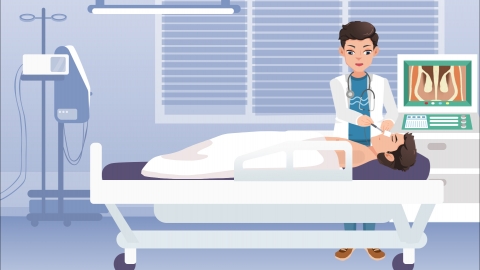What should be done about bilateral thyroid nodules?
Bilateral thyroid nodules require initial evaluation to determine their nature, followed by a treatment plan based on the nodule characteristics. Patients should take prescribed regulatory medications as directed, undergo regular follow-up examinations to monitor changes, and consider surgical intervention when necessary. If nodules grow rapidly or are accompanied by difficulty swallowing or hoarseness, immediate consultation with an endocrinologist or thyroid surgeon is recommended.

1. Initial examination to determine nodule nature: Thyroid ultrasound and thyroid function tests are required. Fine-needle aspiration cytology may be added when necessary to determine whether the nodule is benign or malignant and whether thyroid function is affected. This provides the basis for subsequent treatment. It is recommended to undergo these evaluations at a reputable medical institution to ensure accuracy.
2. Develop a treatment plan based on nodule characteristics: Benign nodules without obvious symptoms typically do not require specific treatment. However, further intervention may be needed if benign nodules are large enough to compress surrounding tissues or if nodules are malignant. A personalized treatment plan should be developed by a qualified physician based on test results.
3. Take prescribed medications as directed: If nodules are associated with thyroid dysfunction, such as hyperthyroidism or hypothyroidism, medications such as levothyroxine sodium tablets, methimazole, or propylthiouracil should be taken according to medical advice. Do not adjust dosage or discontinue medication without consulting your doctor, as this may compromise disease control.
4. Regular follow-up monitoring: Regardless of nodule type, regular thyroid ultrasound and function tests are essential. Benign nodules should generally be re-evaluated every 6–12 months, while the frequency for malignant nodules should follow medical guidance. Regular monitoring helps detect changes in nodule size or characteristics early.
5. Surgical treatment when necessary: Surgery may be considered for malignant nodules or benign nodules that grow rapidly, cause significant compression symptoms, or have complications such as hemorrhage. Procedures may include partial or total thyroidectomy, with the specific approach determined after thorough evaluation by a physician.
For daily care, maintain a regular作息 (routine), avoid excessive fatigue and mental stress, consume iodine in moderation through diet to prevent both excess and deficiency, engage in appropriate physical activity to improve overall health, and keep track of any new or worsening symptoms to report them promptly during follow-up visits.




